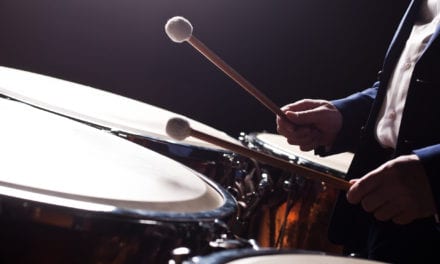By Scott Rush
Successful band directors have a PASSION for music and music making. I call this “heart energy.” Pablo Casals once stated:
“The written note is like a strait jacket; whereas music, like life itself, is constant movement, continuous spontaneity, free from any restrictions. There are so many excellent instrumentalists who are completely obsessed by the printed note, where as it has a very limited power to express what the music actually means.”
He also stated:
“Music is the divine way to tell beautiful, poetic things to the heart.”
Your artistry must be practiced and your musicianship honed. Otherwise, you will not be able to pass along the passion required to artistically make music with your students. You can only give away what you have, and it takes years of developing as a musician and as a person to create a shared environment where the players can express who they are and how they feel through music. Part of our job is to grow in such a way that our life experiences, feelings, and emotions are felt through the music-making process.
Bruno Walter stated:
…that the value of a conductor’s artistic achievements is to a high degree dependent upon his human qualities and capacities, the seriousness of his moral convictions, the richness of his emotional life, the breadth of his mental horizon; In short, his personality has a decisive effect on his achievements. If his personality is unable to fulfill the spiritual demands of the works he performs, his interpretations will remain unsatisfactory although their musical execution may be exemplary.
In addition, it is important to develop a rehearsal vocabulary that exudes music. Notes on the page (notation) simply cannot express all the composer feels or intends, nor does it indicate the depth of expressiveness or the conviction of the interpretation.
- Long notes should have direction—they should intensify or diminuendo.
- Phrases should have peaks and valleys, and direction to and away from arrival points.
- Certain notes receive agogic weight, while others do not.
- Carry over (connect) phrases when appropriate and make sure you don’t breathe at inappropriate places.
- If a line is repeated, do something different with it the second time.
- Find tension and release points.
- Bring out suspensions, appogiaturas, and upper and lower neighbors.
- Musical moments usually take longer to build than they do to pull away.
- In many styles, short notes lead to long notes.
- Know the characteristics and stylistic features of music you are playing: What makes a march sound like a march? What characteristics are unique to Grainger, Brahms, etc.?
- It’s what’s not on the page that makes the music.
- Use “mood” words to establish style and ambiance.
- Assign words (like lyrics) to entire musical phrases to help establish meaning and purpose.
- Persichetti said, “Music is either singing or dancing.”
- It’s what happens between the notes (or from note to note) that makes the music come alive.
- The music will tell you what to do; the natural, intuitive response to the music causes you to create more than what’s on the page.
- Trust your soul to feel and express the music—be musical! Tell a musical story with passion and insight.
- Your blood must drip with musical conviction, both to the players and the audience.
- Try to discover music in every phrase.
- Unlike a painting or sculpture, music can be recreated again and again, with new meaning and understanding.
- The paper and ink do not make the music. Instruments make no sounds on their own—the musician’s soul creates the music.
- Music must be interpreted to the point that the performance is said to be artistic and the performers, artists.
These bullets are designed to establish a vocabulary and a culture for music making. It’s a different mindset than being “in tune,” playing “in time,” or executing the correct articulation or note length. It’s a form of musical communication, a language in and of itself. This short list can aid in the development of the conductor’s ability to communicate musical concepts from the podium. However, the students must be at the point in their musical development where your comments are age appropriate. You must build musical capacity hand in hand with skill and technique; it’s a simultaneous process. Your rehearsal hall should be filled with this type of dialogue. Try making a list of “musical truths” that you use within the rehearsal setting.



